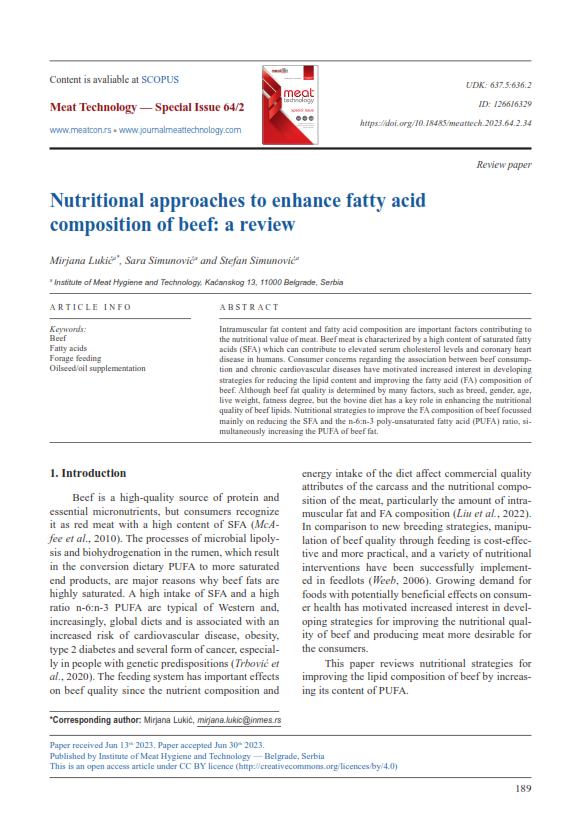Nutritional approaches to enhance fatty acid composition of beef: A review
Abstract
Intramuscular fat content and fatty acid composition are important factors contributing to the nutritional value of meat. Beef meat is characterized by a high content of saturated fatty acids (SFA) which can contribute to elevated serum cholesterol levels and coronary heart disease in humans. Consumer concerns regarding the association between beef consumption and chronic cardiovascular diseases have motivated increased interest in developing strategies for reducing the lipid content and improving the fatty acid (FA) composition of beef. Although beef fat quality is determined by many factors, such as breed, gender, age, live weight, fatness degree, but the bovine diet has a key role in enhancing the nutritional quality of beef lipids. Nutritional strategies to improve the FA composition of beef focussed mainly on reducing the SFA and the n-6:n-3 poly-unsaturated fatty acid (PUFA) ratio, simultaneously increasing the PUFA of beef fat.





